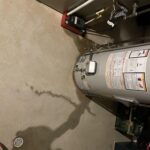Have you ever found yourself staring at the roof during a rainstorm, wondering how to best protect your home from water damage? If so, you’re not alone.
The debate between rain diverters and gutters is one that many homeowners face. Both systems have their advocates, and each offers unique advantages. But which one is right for you and your home? By understanding the differences, benefits, and potential drawbacks of each, you can make a well-informed decision that keeps your home safe and dry.
You’ll discover why some swear by the simplicity of rain diverters while others can’t imagine a home without the tried-and-true protection of gutters. Curious to know which option aligns with your needs? Let’s dive into the world of rain diverters and gutters. Your home’s well-being might just depend on it.
Rain Diverters Explained
Rain diverters are crucial for managing roof water flow. They guide rain away from certain areas of your home. This protects your building from potential water damage.
Unlike gutters, diverters are simple. They don’t collect water but direct it. This makes them ideal for areas where gutters aren’t practical.
What Are Rain Diverters?
Rain diverters are metal strips. They are installed on the roof to redirect rainwater. Their main function is to prevent water from pouring over doors and windows.
How Do Rain Diverters Work?
Diverters create a barrier on the roof. This barrier changes the path of falling rainwater. By redirecting water, they protect entryways from water damage.
Benefits Of Using Rain Diverters
Rain diverters are cost-effective. They are easy to install and require little maintenance. Their design prevents water from damaging doors and entryways.
Where To Install Rain Diverters
Install diverters above doors and windows. They are also useful above garages. This ensures water doesn’t drip directly on these areas.
Materials Used For Rain Diverters
Most diverters are made of metal. Common materials include aluminum and galvanized steel. These materials are durable and rust-resistant.
Limitations Of Rain Diverters
Diverters don’t collect water like gutters. They only redirect it. This means they may not be suitable for heavy rain areas.
Gutters Explained
Rain diverters and gutters are both effective tools for managing rainwater. Understanding how gutters work is crucial for making informed decisions about home maintenance. Gutters play a vital role in protecting your home’s foundation and landscaping. They channel rainwater away from your property, preventing erosion and damage.
What Are Gutters?
Gutters are troughs attached to the edges of a roof. They collect rainwater and direct it to downspouts. Downspouts then guide the water away from the building’s base. This process helps prevent water from pooling around your home.
Materials Used In Gutters
Gutters come in various materials such as aluminum, vinyl, and steel. Aluminum is lightweight and resists rust. Vinyl is easy to install and budget-friendly. Steel offers durability but may require more maintenance.
Importance Of Gutters
Gutters prevent water damage to your home’s foundation. They reduce the risk of mold and mildew buildup. Gutters help maintain the integrity of your home’s exterior. Properly functioning gutters keep your landscaping safe from erosion.
Maintenance Of Gutters
Regular maintenance extends the life of your gutters. Cleaning them ensures water flows freely and prevents clogs. Inspect for leaks or damage after storms. Consider installing guards to minimize debris buildup.
Key Differences
Understanding the differences between rain diverters and gutters is crucial. Both play a role in managing rainwater, but they serve distinct purposes. By examining their functionality, installation, and maintenance, you can decide which suits your needs better.
Functionality
Rain diverters direct water away from doors or areas needing protection. They are usually installed over doorways or windows. Gutters collect rainwater from the roof and direct it to downspouts. This helps in preventing water damage to the foundation.
Installation
Installing rain diverters is simple. They attach above the area needing protection. Usually, a few screws are all that’s needed. Gutters require more work. They run along the entire roofline. You might need brackets, screws, and downspouts for proper installation.
Maintenance
Rain diverters need minimal upkeep. Check them occasionally to ensure they stay in place. Gutters require regular cleaning. Leaves and debris can block them, causing water overflow. Inspect them every few months to ensure proper function.

Credit: www.amazon.com
Benefits Of Rain Diverters
Rain diverters offer unique advantages that make them an appealing alternative to traditional gutters. Whether you’re looking for cost-saving options, minimal upkeep, or a stylish addition to your home, rain diverters might be the perfect choice. Let’s dive into the benefits that make rain diverters stand out.
Cost-effectiveness
Rain diverters can save you money from the start. Unlike gutters, which require materials like aluminum or vinyl, diverters are simple and inexpensive to install. Imagine spending less on installation and materials, yet still efficiently managing rainwater around your home.
Consider how this savings could be used elsewhere. Perhaps towards a garden project or a new outdoor seating area. The affordability of rain diverters opens up possibilities that might not be feasible with gutters.
Minimal Maintenance
Who enjoys climbing ladders to clean gutters? Rain diverters eliminate this chore. With fewer parts and a straightforward design, they require little upkeep. You can spend more time enjoying your home rather than maintaining it.
Think about the peace of mind knowing your rain management system works without constant attention. It’s a relief to avoid the hassle and stress of regular gutter maintenance.
Aesthetic Appeal
Rain diverters blend seamlessly with your home’s exterior. They can be positioned unobtrusively, enhancing your home’s look rather than detracting from it. It’s an opportunity to maintain your home’s aesthetic without bulky gutters cluttering the view.
Have you ever looked at your house and wished for a cleaner façade? Rain diverters offer a sleek solution that complements architectural design. They can be the subtle touch that elevates your home’s curb appeal.
So, would you consider rain diverters for your home? Their advantages are clear, offering savings, ease, and beauty. It’s worth thinking about how these benefits could enhance your living space.
Benefits Of Gutters
Gutters play a vital role in protecting your home from water damage. They channel rainwater away from the foundation, preventing costly repairs. While rain diverters are an option, gutters offer unique advantages. Let’s explore the benefits of gutters in detail.
Efficient Water Management
Gutters efficiently manage water flow from the roof. They guide rainwater to downspouts and away from the foundation. This prevents soil erosion and basement flooding. Proper water management also protects landscaping.
Long-term Durability
Gutters are built to last. Made from materials like aluminum and steel, they withstand harsh weather conditions. Properly maintained, they offer long-term protection for your home. This durability means fewer replacements and repairs.
Customization Options
Gutters offer customization to fit your home’s style. They come in various colors and materials to match your exterior. You can also choose different styles and sizes. Customization enhances curb appeal while maintaining functionality.
When To Choose Rain Diverters
Rain diverters offer a practical solution for water management. They redirect rainwater away from entrances and sensitive areas. But when should you opt for rain diverters over traditional gutters?
Suitable Roof Types
Rain diverters fit well with sloped roofs. They work best on roofs with shingles or tiles. Flat roofs might not benefit much from diverters. Consider the roof material too. Metal roofs can also work with diverters. Ensure the roof structure supports their installation.
Budget Considerations
Rain diverters often cost less than gutters. They require fewer materials and less labor. This makes them a budget-friendly option. If funds are tight, diverters can be a smart choice. They provide effective water management without a hefty price tag.
Climate Factors
In areas with light to moderate rainfall, diverters perform well. Heavy rainfall regions may demand traditional gutters. Diverters help in areas prone to ice dams too. They prevent water from pooling and freezing. Consider the local weather patterns before deciding.
When To Choose Gutters
Choosing the right rain management system is crucial for your home. Gutters and rain diverters both have their own benefits. Yet, certain conditions make gutters a better choice. This section will explore situations where gutters are the preferred option.
High Rainfall Areas
Gutters handle large amounts of rainwater efficiently. In places with heavy rainfall, this is essential. Gutters direct water away from your home’s foundation. This prevents water damage and flooding. Rain diverters may not manage high volumes as effectively. Gutters offer peace of mind during intense rainstorms.
Complex Roof Designs
Homes with complex roof designs benefit from gutters. Roofs with multiple slopes can cause water to pool. Gutters provide structured water flow in such cases. They prevent water from accumulating in unwanted areas. This protects the roof and siding from water damage. Gutters work with diverse roof styles seamlessly.
Long-term Investment
Gutters are a long-term investment for homeowners. They add value to the property by protecting its integrity. Properly maintained gutters last for many years. They require regular cleaning and checks, but offer lasting benefits. Gutters are a sound choice for those seeking durability.

Credit: 180contractors.com
Installation Tips
Installing rain diverters or gutters can protect your home from water damage. Proper installation is crucial for effective water management. This section offers practical tips to ensure a seamless installation process.
Diy Vs Professional Help
Deciding between DIY and professional help matters. DIY can save money but requires skill and time. A professional ensures a precise installation. They have the expertise and tools needed. Choose based on your confidence and ability.
Common Mistakes To Avoid
Avoid placing diverters or gutters at the wrong angle. This can lead to water pooling. Ensure the slope directs water away from your home. Overlooking sealing joints can cause leaks. Regularly check for debris buildup to prevent clogs.
Materials And Tools Needed
For rain diverters, you need metal or plastic strips. Gutters require sections, downspouts, and brackets. You’ll need a ladder, measuring tape, and a drill. Sealing tape or silicone caulk is essential for preventing leaks. Gloves and safety glasses protect during installation. Always prioritize safety and accuracy.
Maintenance Tips
Rain diverters and gutters each have unique benefits. Rain diverters redirect water away from entryways, preventing leaks. Gutters collect rainwater, directing it safely away from the foundation. Proper maintenance ensures effective water management and protects your home. Regular inspections help avoid clogs and damage, ensuring long-term functionality.
Maintaining rain diverters and gutters is crucial for ensuring their efficiency in protecting your home from water damage. Proper maintenance not only extends their lifespan but also helps you avoid costly repairs. Whether you’re a DIY enthusiast or prefer hiring professionals, keeping these systems in top shape doesn’t have to be daunting. Let’s dive into some practical tips that can make your maintenance routine a breeze.Seasonal Checks
Regular seasonal checks are your first line of defense. Inspect rain diverters and gutters at least once every season. Look for signs of wear and tear, like rust or sagging sections. During a rainy day, observe if water flows smoothly through the system without leaks or overflows. In my experience, a quick walk around the house after a heavy rainstorm can reveal potential issues. Keep an eye out for water pooling near the foundation, which could indicate a blockage or misaligned diverter.Cleaning Techniques
Keeping your rain diverters and gutters clean is essential for their functionality. Use a sturdy ladder to reach the gutters safely. Remove leaves, twigs, and other debris by hand or with a small garden trowel. A garden hose can help flush out smaller particles and confirm that water flows freely. A friend once told me about using an old spatula to scoop debris—it might sound odd, but it worked like a charm for those stubborn spots. Consider installing gutter guards to minimize debris buildup if you live in an area with frequent leaf fall. They might require an initial investment, but they can save you time and effort in the long run.Repairing Damages
Identifying and repairing damages early can prevent larger problems. Small cracks or holes in gutters can be fixed with sealant or patches, which are readily available at hardware stores. If you notice loose hangers or brackets, tighten them promptly to prevent sagging. In cases where the damage is extensive, such as severe rust or large leaks, you might need to replace sections of the gutter or diverter. Don’t hesitate to call a professional if you’re unsure about the repair. Have you ever ignored a small leak only to find it worsened over time? It’s a reminder that timely repairs can save you from headaches and extra expenses. Prioritize these fixes to maintain the efficiency of your rain diverters and gutters. Taking these steps will help your rain diverters and gutters function effectively, protecting your home from water damage. Are you ready to give your system the care it deserves?Environmental Impact
Rain diverters can minimize the environmental impact by directing water away from sensitive areas. Gutters efficiently collect rainwater, reducing erosion and protecting landscapes. Both systems help manage water flow, ensuring less damage to the environment.
The environmental impact of rain diverters and gutters is a topic that might not immediately come to mind when you’re planning home improvements. Yet, it’s crucial to consider how these systems affect our planet. Whether you’re a homeowner or a renter, understanding the difference can help you make eco-friendly choices. Both rain diverters and gutters have unique features that contribute to sustainability, water conservation, and the health of local ecosystems. So, how do these systems stack up in terms of their environmental footprint?Sustainable Materials
Choosing sustainable materials for rain diverters and gutters can significantly reduce your environmental impact. Many traditional gutters are made from aluminum or plastic, which require energy-intensive processes and can be difficult to recycle. Rain diverters, on the other hand, often use reclaimed wood or recycled metal, offering a greener alternative. Consider the lifespan and recyclability of the materials you choose. Opting for eco-friendly options not only benefits the planet but can also add a unique aesthetic to your home.Water Conservation
Rain diverters excel in water conservation, allowing rainwater to be redirected into garden beds or water barrels. This simple mechanism can reduce your dependence on municipal water sources and lower water bills. Gutters primarily direct rainwater away from the home, but with a bit of creativity, they can be integrated with rainwater harvesting systems. Imagine the savings and environmental benefits of capturing rainwater for irrigation or household use. Are you maximizing your rainwater potential?Impact On Local Ecosystems
Both rain diverters and gutters have implications for local ecosystems. Gutters can contribute to water pollution by channeling runoff into storm drains, carrying chemicals and debris along the way. Rain diverters minimize this by directing water to permeable surfaces, allowing it to naturally filter through the soil. Consider how your home’s drainage system affects local wildlife and plant life. Could you make a choice that supports biodiversity in your area? Your decision between rain diverters and gutters isn’t just about functionality—it’s about taking a step towards a more sustainable future. By understanding their environmental impact, you can make choices that benefit both your home and the planet.
Credit: www.bluebarrelsystems.com
Frequently Asked Questions
What Is The Purpose Of A Rain Diverter?
A rain diverter redirects rainwater away from entryways. It prevents water damage. Keeps walkways dry.
How Do Gutters Differ From Rain Diverters?
Gutters collect and channel rainwater to a drainage point. Rain diverters redirect water away from specific areas.
Are Rain Diverters Better Than Gutters?
Rain diverters are simpler and less costly. Gutters handle more water and offer better drainage.
Can Rain Diverters Prevent Roof Leaks?
Yes, rain diverters help by directing water away from vulnerable areas. Reduces risk of leaks.
How Often Should You Maintain Gutters?
Gutters need cleaning twice a year. Remove debris to ensure proper water flow. Prevent blockages.
Conclusion
Choosing between rain diverters and gutters depends on your needs. Rain diverters offer simple solutions for small areas. They work well for doorways or pathways. Gutters handle larger volumes of water. They protect your entire home from water damage. Consider your budget and maintenance preferences.
Think about your local weather conditions too. Both options have their benefits and drawbacks. Evaluate each carefully to decide. Whatever you choose, ensure it suits your home. Keeping water damage at bay is crucial. Make an informed decision for long-lasting protection.
Your home will thank you.




